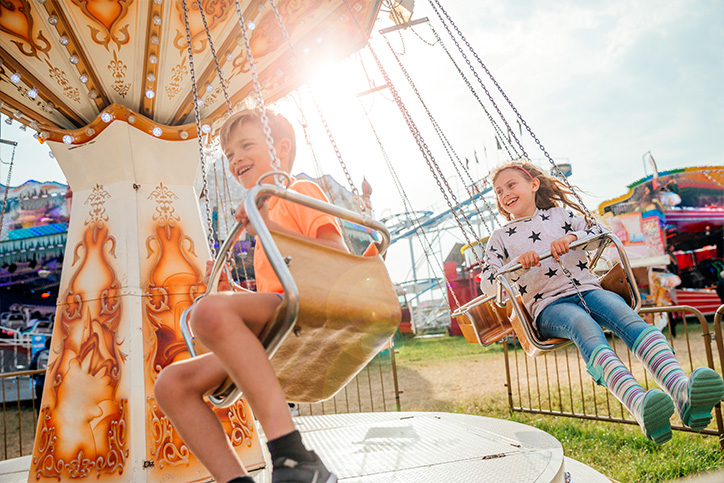Falls are the most commonly reported injuries at theme parks across the country. More than 43,000 people were injured at amusement parks in 2017.
Amusement park injuries are caused by:
- Mechanical failures
- Defective rides
- Rider operator error
- Slip & fall accidents
When most people think of an amusement park injury, they think of catastrophic injuries that occur on thrill rides. And although those happen, they’re very rare. The reality is, the most common cause of injuries at amusement parks are falling as a result of tripping hazards and slippery surfaces. They’re categorized as “trip and fall” and “slip and fall” injuries.
The variance of “slip and fall” and “trip and fall” injuries commonly include:
- Strains and sprains
- Soft tissue injury
- Broken and fractured bones
- Cuts, lacerations, and bruising
- Head and neck injury
- Spinal cord injury
The majority of theme park trip and fall and slip and fall injuries occur on carousels, roller coasters, and bumper cars.
Who is responsible for theme park guest safety?
Owners and operators of theme parks take on the dual roles of properly maintaining attractions and rides, while also creating a safe environment for guests in all spaces.
It’s easy to focus on ride and attraction safety and overlook safety in a cafeteria space. No matter where a guest sustains a slip and fall injury, the theme park owner can be liable if they are deemed negligent. Injury liability may be put on the theme park owner, ride manufacturer, or even a concession stand owner.
The property owner may not always be the only party responsible for a slip and fall or trip and fall injury. Liable parties can include:
- Property management company
- A tenant leasing or subleasing a property
- Contractors and subcontractors working on a property
- Employees of property owners
Creating a culture of safety awareness is an excellent way for owners to mitigate injuries. They should train staff to be vigilant for wet steps, unsafe platforms, unmarked cables, debris on the ground, and other obstacles. The higher the awareness among staff, the greater the chances of preventing slips and falls.
Prevention is the best solution
Like most things in life, prevention is the best plan to avoid theme park guest injuries. There are several ways a theme park owner can mitigate the chances of guests tripping or slipping:
- Display proper safety signage
- Train employees to immediately wipe up spills
- Avoid clutter and create wide travel spaces
- Implement consistent and thorough inspection practices
- Check daily for uneven walking surfaces, missing bricks, and floor tile damage
- Keep parking lots and sidewalks in good condition
- Use anti-skid paint on walking surfaces
- Place plenty of trash receptacles throughout the park
Waterparks face an especially big challenge in staying on top of wet sidewalks and other areas where water can accumulate. Having guests sign a liability waiver upon entry helps, but a waiver does not relieve an amusement park from providing a safe experience for guests.
McGowan knows what it takes to help theme park owners succeed, stay protected, and provide an unforgettable experience for their guests. Whatever type of theme park you or your client owns, McGowan can help.
McGowan’s Family Entertainment Center Insurance provides insurance coverage and loss-control services in a package that can’t be matched.


